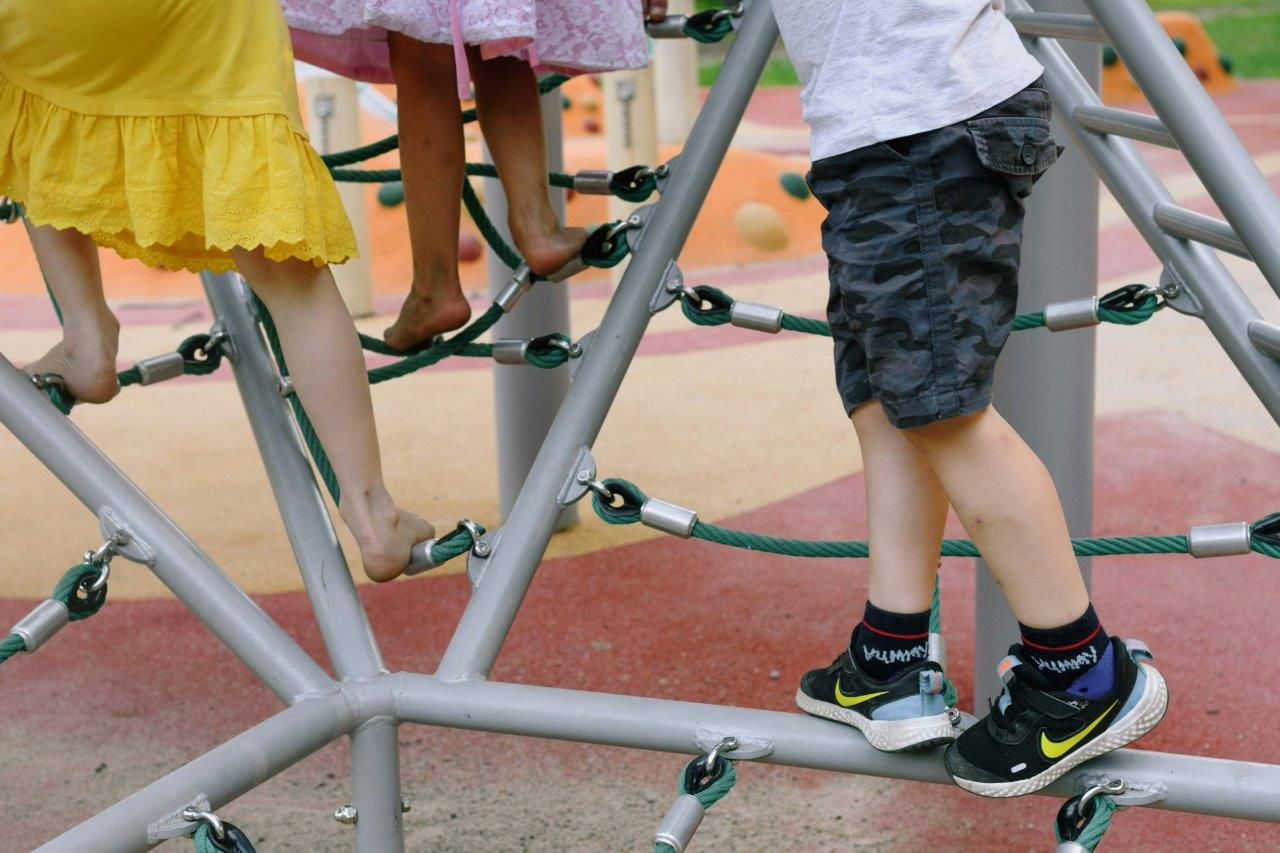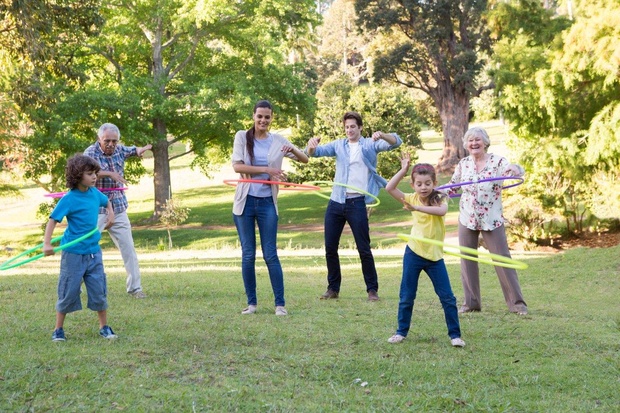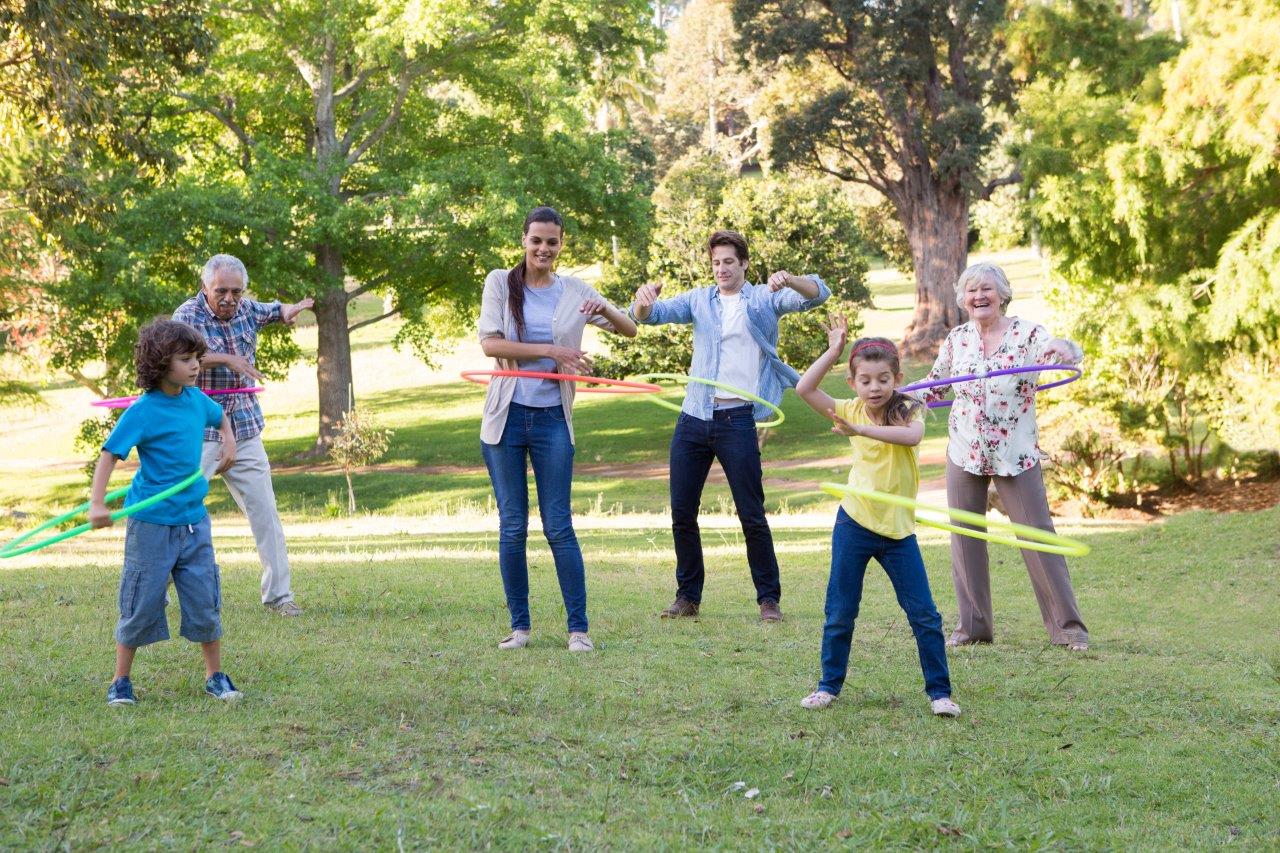Researchers from the University of South Australia (UniSA) and the University of Canberra have been exploring the benefits of intergenerational play through specially designed playgrounds for kids and adults.
“Intergenerational play is already happening within families, when grandparents are looking after their grandchildren, especially during school holidays, but rather than just standing or sitting, if we can provide the right kind of facility, so our elderly can also be doing some physical activities, that’s good for both their physical and mental health, but also encourages intergenerational interaction between different families,” associate professor Fanke Peng tells EducationHQ.
The deputy director of the Australian Research Centre for Interactive and Virtual Environments (IVE) at UniSA says that society needs more public spaces that enable generational integration and interaction.
“What we’ve learned from things run by councils, such as Grand Friends, which has people from different families interacting, is, from the younger generation’s perspective, it’s a day when they can learn a lot from older people, through things like story sharing and drawing on the rich experience of older people.
“At the same time, older people, when they share their stories, it’s actually a fulfillment as well.”
Peng says unfortunately there’s a social divide between older and younger people, and it leaves little room for meaningful interaction outside of families and classrooms.
“This age-based segregation causes feelings of isolation and social disconnectedness, which in turn can lead to depression, anxiety, suicidal ideation, and cognitive decline in older adults.
“From shows like the ABC’s Old People’s Home for 4-Year-Olds, what we all learned is, what programs like that demonstrate, is that two extremely different age groups can discover shared experiences and interest and that they actually have much more in common than what we realised.”
On top of storytelling, intergenerational play brings young children and older people together to engage in enjoyable and creative activities like using playground equipment and playing shared games.
In play space co-design workshops hosted by the researchers, participants aged 65 and over discussed the benefits of spending time with children and what a shared space could look like in their community.
Participants also reflected on their favourite play experience, their experiences playing with children, and what elements they would want or need in an intergenerational playground, such as accessible amenities like shaded seating, water and toilets, and play equipment that is easy for older people to use while still meeting the needs of children.
Peng says there are also barriers that exist that make it harder for older people to engage in play, such as social attitudes and stigmas that play is only for children.

Designing playgrounds that cater to young children and older people is no easy challenge, but Peng and her fellow researchers are confident it can be done, and with changing societal attitudes it will benefit all in the long run.
“It’s really hard for older people to engage in play, with these attitudes, society deems that it’s not appropriate for older people, whether it be people my age or people that are elderly, to play.
“How do we go about adjusting society so that it’s more acceptable? Play is part of good living.”
What Peng and her fellow researchers are hoping is multifunctional, all-encompassing spaces can be provided.
“At the moment all playgrounds are almost exclusively for children and for parents or carers to be there, and there’s no proper space for older people to feel safe to engage in this intergenerational play,” she says.
“So it’s kind of, like ‘how can we meet on common ground?’
“There are a lot of things need to be done - it’s not just ‘yes to create one physical space’, but it is also about trying to raise awareness, and to try to normalise it as well.
Speaking in the co-design workshops, one particpant shared their experience.
“(Spending time with children is) also good for my health. And my wellbeing. And it’s the participation. (That’s really) important,” they said.
“Playing with the kids also makes you feel young. It gives you that sense of accomplishment that you haven’t lost those skills.”
Peng says research was undertaken through a design perspective, including product design, service design, and also the space environment design.
“So instead of just doing testing at the very end of the project to see whether it’s the right playground design to use, what we are continuing to try to do now, then and now, is bring together various key stakeholders to find out what we can do to bridge the gaps.”
She says this type of research is relatively new, for example in academia, the Australia Intergenerational Practice Association was only established in 2021.
“The more people get involved in this, it’s kind of like a movement, so we can have more people engaged doing it,” she says.
“We see the value as a society. So it’s about trying to bridge the intergenerational gap and strengthen the community ties.
“This kind of thing takes time, and I think it requires a whole society to get involved.”
Click here to read more of Peng and her team's research into the benefits of intergenerational play.














